SiLiF Neutron Counters to Monitor Nuclear Materials in the MICADO Project
Abstract
:1. Introduction
2. Materials and Methods
- 6LiF is much cheaper and more easily available than 3He;
- any solid state detector can in principle be used to detect the secondary particles;
- it is operated at low voltage, typically 30–50 V as opposed to ≈1000 V of a gas detector;
- the semiconductor and the neutron converter can be replaced independently in case of damage;
2.1. The Detector
2.2. The Neutron Moderator
2.3. The Neutron Source
3. Results
3.1. Measurements in the Front Position
3.2. Gamma/Neutron Discrimination
- The first one, a decreasing exponential extrapolated in the figure up to 1 MeV, is mainly due to the abundant 2.2 MeV gamma rays produced by the neutron capture on hydrogen in the moderator box. We name it here “gamma1” contribution.
- The second one, a decreasing exponential extending up to 1.5 MeV and extrapolated in the figure up to 2 MeV, is due to the gamma rays produced by the AmBe source itself. Indeed, whenever an alpha particle from the americium reacts with the beryllium, this decays by emitting one neutron and one gamma ray, with the gamma energy between 3.4 and 4.4 MeV. We estimated that roughly the same number of such gamma rays and neutrons hit the detector in the front measurement position. Part of this contribution is also due to the elastic scattering of neutrons on silicon, with cross section of a few barn, and maximum silicon recoil kinetic energy, from 10 MeV neutrons, of about 1.33 MeV. We name it here “gamma2” contribution.
- The third one, with an almost constant linear trend toward high energy (“HE” contribution), is due to the 28Si(n,p)28Al reaction whose threshold is around 6 MeV and which has several resonances and cross section around 300 b. In this case both the proton and the recoiling 28Al deposit kinetic energy in the detector.
- The counts above 2.73 MeV, i.e., the HE contribution, have to be ascribed to neutrons, even though not interacting with the 6LiF converter, and have to be considered in the detection efficiency evaluation.
- Fitting the two decreasing exponentials of Figure 11 can provide a realistic estimate of the gamma contribution in the measured neutron counts.
3.3. Intrinsic Detection Efficiency Measurement
3.4. Test with Fast Neutrons
4. Discussion
| Fissioning Species | 240Pu |
|---|---|
| T1/2 [y] | 6561 |
| T1/2 [s] | 2.07 × 1011 |
| decay constant τ [y] | 9466 |
| decay constant τ [s] | 2.99 × 1011 |
| decay rate [1/s] | 3.35 × 10−12 |
| fission Branching Ratio | 5.70 × 10−8 |
| fission rate [1/s] | 1.91 × 10−19 |
| atomic mass [amu] | 240.05 |
| N atoms/gram | 2.51 × 1021 |
| sample mass [g] | 100 |
| N atoms in sample | 2.51 × 1023 |
| fission rate in sample [1/s] | 4.79 × 104 |
| <prompt neutrons>/fission | 2.16 |
| neutron rate from sample [1/s] | 1.03 × 105 |
| Radwaste Package Matrix | Inox/CH2 67/33% |
|---|---|
| RWP radius [cm] | 28.5 |
| RWP extended radius [cm] | 38.5 |
| RWP height [cm] | 86 |
| RWP extended side area [cm2] | 20,804 |
| RWP top + bottom area [cm2] | 9313 |
| RWP total exit area | 30,117 |
| SiLiF active area [cm2] | 9 |
| number of SiLiF units | 4 |
| rough geometrical efficiency | 1.20 × 10−3 |
| thermal neutron detection efficiency | 4% |
| total neutron counting efficiency | 4.8 × 10−5 |
| n absorption factor (guess) | 0.1 |
| counts/s in 4 SiLiF from sample | 4.5 |
5. Conclusions
Author Contributions
Funding
Institutional Review Board Statement
Informed Consent Statement
Data Availability Statement
Acknowledgments
Conflicts of Interest
References
- MICADO Project. Available online: https://www.micado-project.eu/ (accessed on 16 March 2021).
- Italy in MICADO WP7. Available online: https://www.micado-project.eu/news/particles-of-italian-innovation-project/ (accessed on 30 March 2021). (and video at minute 1:10).
- Finocchiaro, P. DMNR: A new concept for real-time online monitoring of short and medium term radioactive waste. In Radioactive Waste: Sources, Types and Management; Nova Science Publishers: New York, NY, USA, 2011; pp. 1–40. [Google Scholar]
- Finocchiaro, P. Radioactive Waste: A System for Online Monitoring and Data Availability. Nucl. Phys. News 2014, 24, 34. [Google Scholar] [CrossRef]
- Cosentino, L.; Calì, C.; De Luca, G.; Guardo, G.; Litrico, P.; Pappalardo, A.; Piscopo, M.; Scirè, C.; Scirè, S.; Vecchio, G.; et al. Real-Time Online Monitoring of Radwaste Storage: A Proof-of-Principle Test Prototype. IEEE Trans. Nucl. Sci. 2012, 59, 1426–1431. [Google Scholar] [CrossRef]
- Finocchiaro, P.; Ripani, M. Radioactive Waste Monitoring: Opportunities from New Technologies. In Proceedings of the IAEA International Conference on Physical Protection of Nuclear Material and Nuclear Facilities, IAEA-CN-254/117. Vienna, Austria, 13–17 November 2017. [Google Scholar]
- Henzlova, D.; Kouzes, R.; McElroy, R.; Peerani, P.; Aspinall, M.; Baird, K.; Bakel, A.; Borella, M.; Bourne, M.; Bourva, L.; et al. Current Status of 3He Alternative Technologies for Nuclear Safeguards; NNSA USDOE EURATOM, LA-UR-15-21201; Los Alamos National Laboratory: Los Alamos, NM, USA, 2015. [Google Scholar] [CrossRef]
- Barbagallo, M.; Cosentino, L.; Forcina, V.; Marchetta, C.; Pappalardo, A.; Peerani, P.; Scire, C.; Scire, S.; Schillaci, M.; Vaccaro, S.; et al. Thermal neutron detection using a silicon pad detector and 6LiF removable converters. Rev. Sci. Instrum. 2013, 84, 033503. [Google Scholar] [CrossRef] [PubMed]
- McGregor, D.S.; Hammig, M.D.; Yang, Y.H.; Gersch, H.K.; Klann, R.T. Design consideration for thin film coated semiconductor thermal neutron detectors –I: Basics regarding alpha particle emitting neutron reactive films. Nucl. Instrum. Methods Phys. Res. Sect. A 2003, 500, 272. [Google Scholar] [CrossRef]
- Baker, C.A.; Green, K.; Van der Grinten, M.G.D.; Iaydjiev, P.S.; Ivanov, S.N.; Al-Ayoubi, S.; Harris, P.G.; Pendlebury, J.M.; Shiers, D.B.; Geltenbort, P. Development of solid-state silicon devices as ultra cold neutron detectors. Nucl. Instrum. Methods Phys. Res. Sect. A 2002, 487, 511. [Google Scholar] [CrossRef]
- Phlips, B.F.; Kub, F.J.; Novikova, E.I.; Wulf, E.A.; Fitzgerald, C. Neutron detection using large area silicon detectors. Nucl. Instrum. Methods Phys. Res. Sect. A 2007, 579, 173. [Google Scholar] [CrossRef]
- Uher, J.; Fröjdh, C.; Jakůbek, J.; Kenney, C.; Kohout, Z.; Linhart, V.; Parker, S.; Petersson, S.; Pospíšil, S.; Thungström, G. Characterization of 3D thermal neutron semiconductor detectors. Nucl. Instrum. Methods Phys. Res. Sect. A 2007, 576, 32. [Google Scholar] [CrossRef]
- Voytchev, M.; Iñiguez, M.P.; Méndez, R.; Mañanes, A.; Rodríguez, L.R.; Barquero, R. Neutron detection with a silicon PIN photodiode and 6LiF converter. Nucl. Instrum. Methods Phys. Res. Sect. A 2003, 512, 546. [Google Scholar] [CrossRef]
- Pappalardo, A.; Barbagallo, M.; Cosentino, L.; Marchetta, C.; Musumarra, A.; Scirè, C.; Scirè, S.; Vecchio, G.; Finocchiaro, P. Characterization of the silicon+6LiF thermal neutron detection technique. Nucl. Instrum. Methods Phys. Res. Sect. A 2016, 810, 6. [Google Scholar] [CrossRef] [Green Version]
- Lo Meo, S.; Cosentino, L.; Mazzone, A.; Bartolomei, P.; Finocchiaro, P. Study of silicon+6LiF thermal neutron detectors: GEANT4 simulations versus real data. Nucl. Instrum. Methods Phys. Res. Sect. A 2017, 866, 48. [Google Scholar] [CrossRef] [Green Version]
- Finocchiaro, P.; Cosentino, L.; Lo Meo, S.; Nolte, R.; Radeck, D. Absolute efficiency calibration of 6LiF-based solid state thermal neutron detectors. Nucl. Instrum. Methods Phys. Res. Sect. A 2018, 885, 86. [Google Scholar] [CrossRef] [Green Version]
- Cosentino, L.; Musumarra, A.; Barbagallo, M.; Colonna, N.; Damone, L.; Pappalardo, A.; Piscopo, M.; Finocchiaro, P. Silicon detectors for monitoring neutron beams in n-TOF beamlines. Rev. Sci. Instrum. 2015, 86, 073509. [Google Scholar] [CrossRef] [PubMed]
- Pappalardo, A.; Vasi, C.; Finocchiaro, P. Direct comparison between solid state Silicon+6LiF and 3He gas tube neutron detectors. Results Phys. 2016, 6, 12. [Google Scholar] [CrossRef] [Green Version]
- Agostinelli, S.; Allison, J.; Amako, K.; Apostolakis, J.; Araujo, H.; Arce, P.; Asai, M.; Axen, D.; Banerjee, S.; Barrand, G.; et al. Geant4—A simulation toolkit. Nucl. Instrum. Methods Phys. Res. Sect. A 2003, 506, 250. [Google Scholar] [CrossRef] [Green Version]
- Fasso, A.; Ferrari, A.; Ranft, J.; Sala, P.R. FLUKA: A Multi-Particle Transport Code; CERN Technical Report No. INFN/TC_05/11; CERN-2005-10; Stanford University: Stanford, CA, USA, 2005. [Google Scholar]
- Werner, C.J.; Bull, J.S.; Solomon, C.J.; Brown, F.B.; Mckinney, G.W.; Rising, M.E.; Dixon, D.A.; Martz, R.L.; Hughes, H.G.; Cox, L.J.; et al. MCNP6.2 Release Notes; Report LA-UR-18-20808; Los Alamos National Laboratory: Los Alamos, NM, USA, 2018. [Google Scholar]
- American National Standard Performance Criteria for Mobile and Transportable Radiation Monitors Used for Homeland Security. In ANSI N42.43-2016 (Revision of ANSI N42.43-2006); IEEE: New York, NY, USA, 2016; pp. 1–54. [CrossRef]
- American National Standard for Evaluation and Performance of Radiation Detection Portal Monitors for Use in Homeland Security. In ANSI N42.35-2016 (Revision of ANSI N42.35-2006; IEEE: New York, NY, USA, 2016; pp. 1–70. [CrossRef]
- The Portable Neutron Spectrometer. Available online: https://www.admnucleartechnologies.com.au/425069461 (accessed on 16 March 2021).
- Nordlund, K.; Zinkle, S.J.; Sand, A.E.; Granberg, F.; Averback, R.S.; Stoller, R.E.; Suzudo, T.; Malerba, L.; Banhart, F.; Weber, W.J.; et al. Primary radiation damage: A review of current understanding and models. J. Nucl. Mater. 2018, 512, 450. [Google Scholar] [CrossRef]
- Amaducci, S.; Cosentino, L.; Barbagallo, M.; Colonna, N.; Mengoni, A.; Massimi, C.; Meo, S.L.; Finocchiaro, P.; Aberle, O.; Andrzejewski, J.; et al. Measurement of the 235U(n,f) cross section relative to the 6Li(n,t) and 10B(n,α) standards from thermal to 170 keV neutron energy range at n TOF. Eur. Phys. J. A 2019, 55, 120. [Google Scholar] [CrossRef] [Green Version]
- The US National Nuclear Data Center. Available online: https://www.nndc.bnl.gov/ (accessed on 16 March 2021).
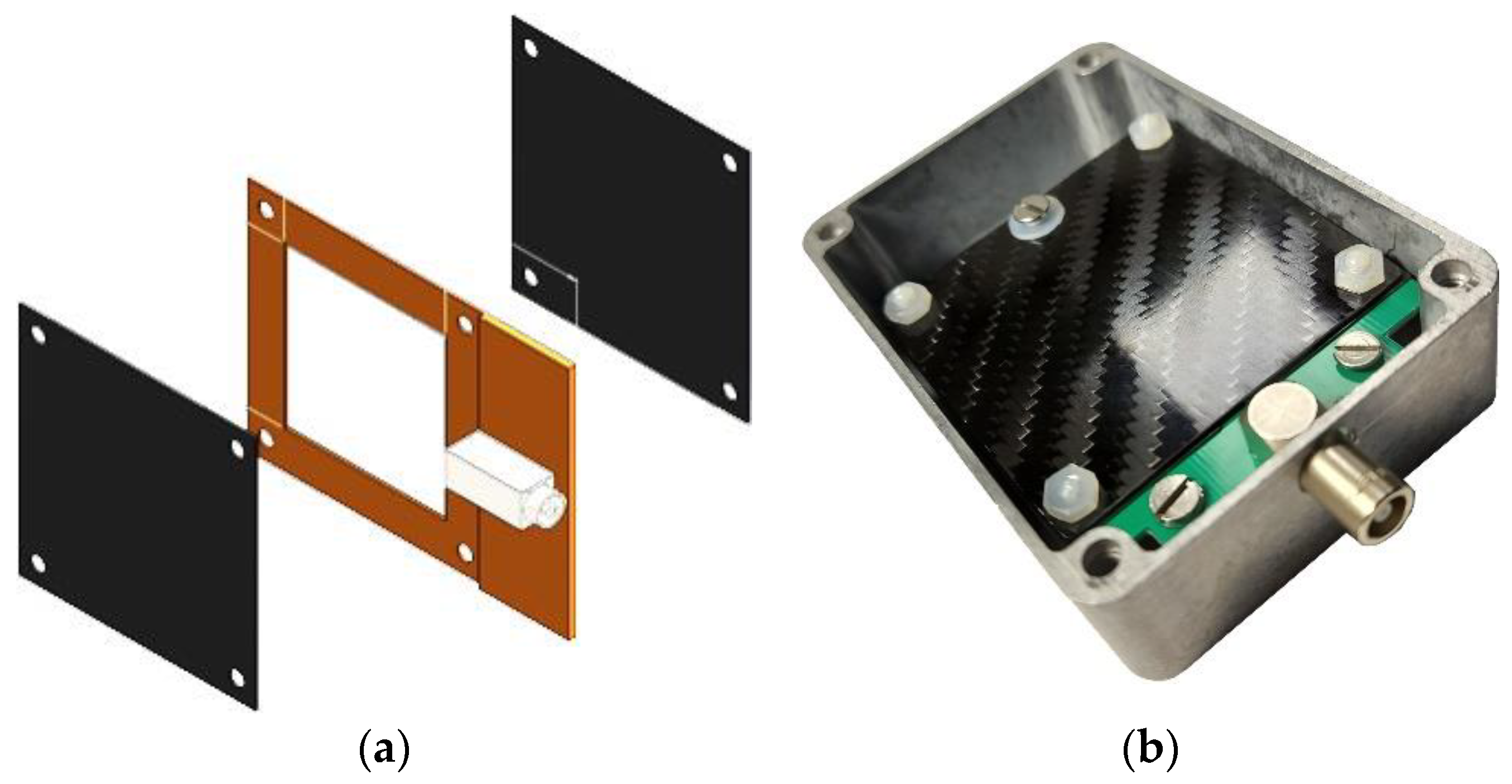
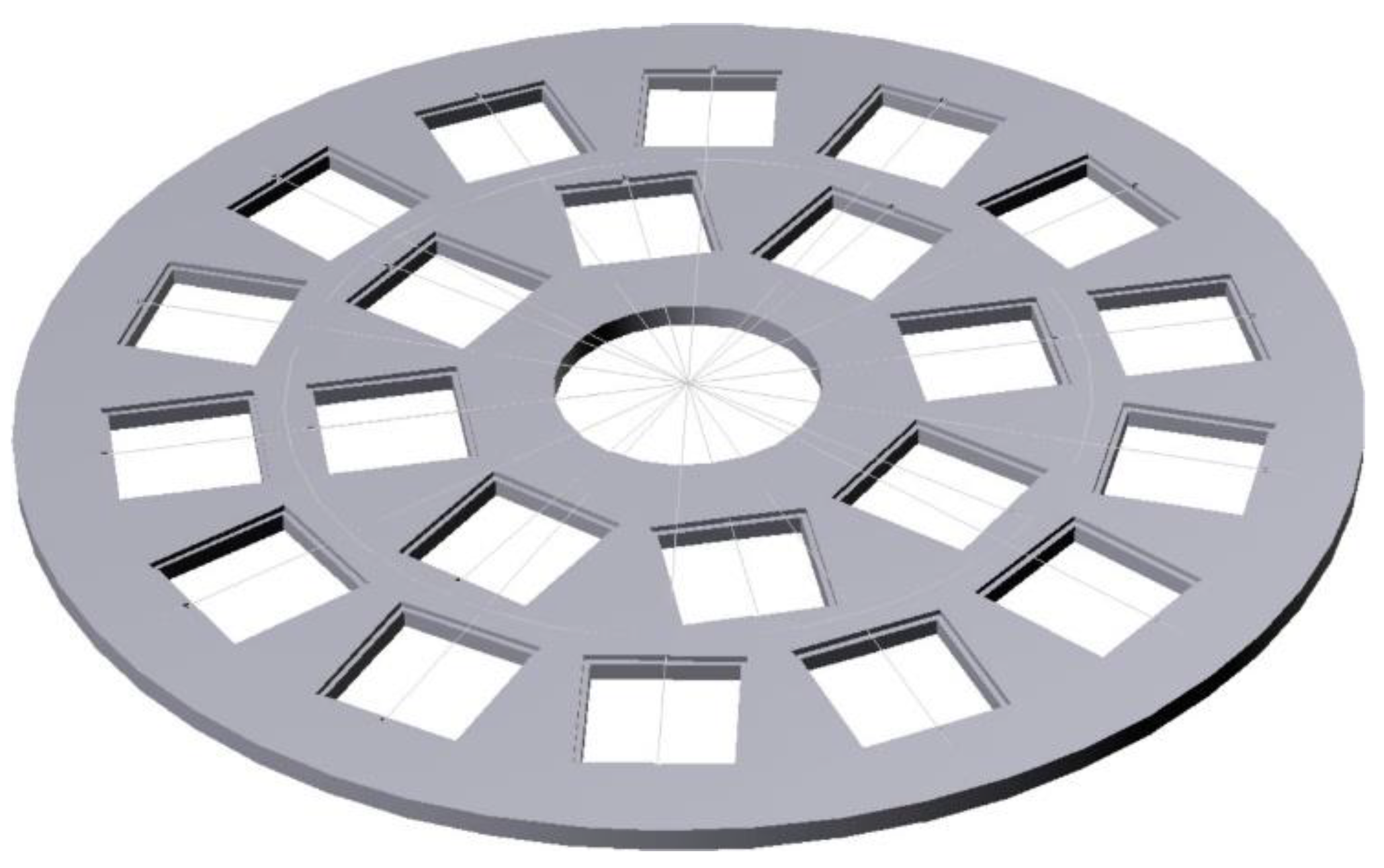

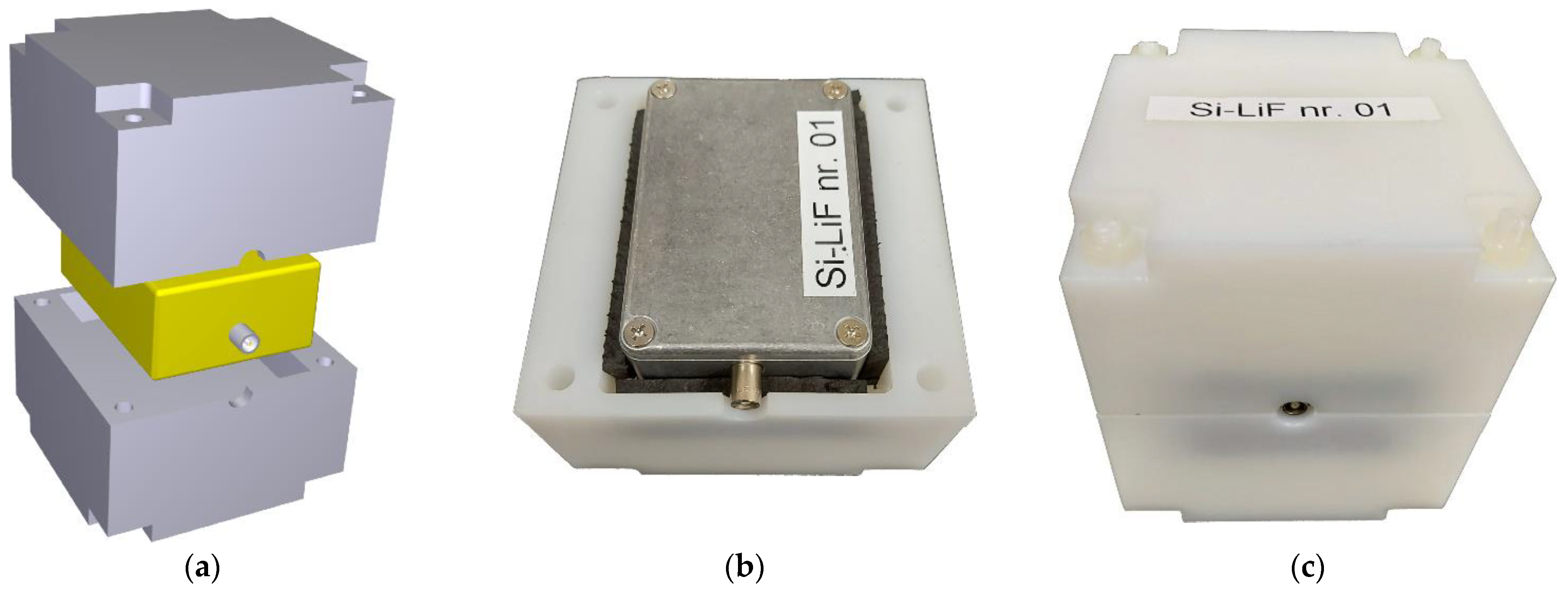


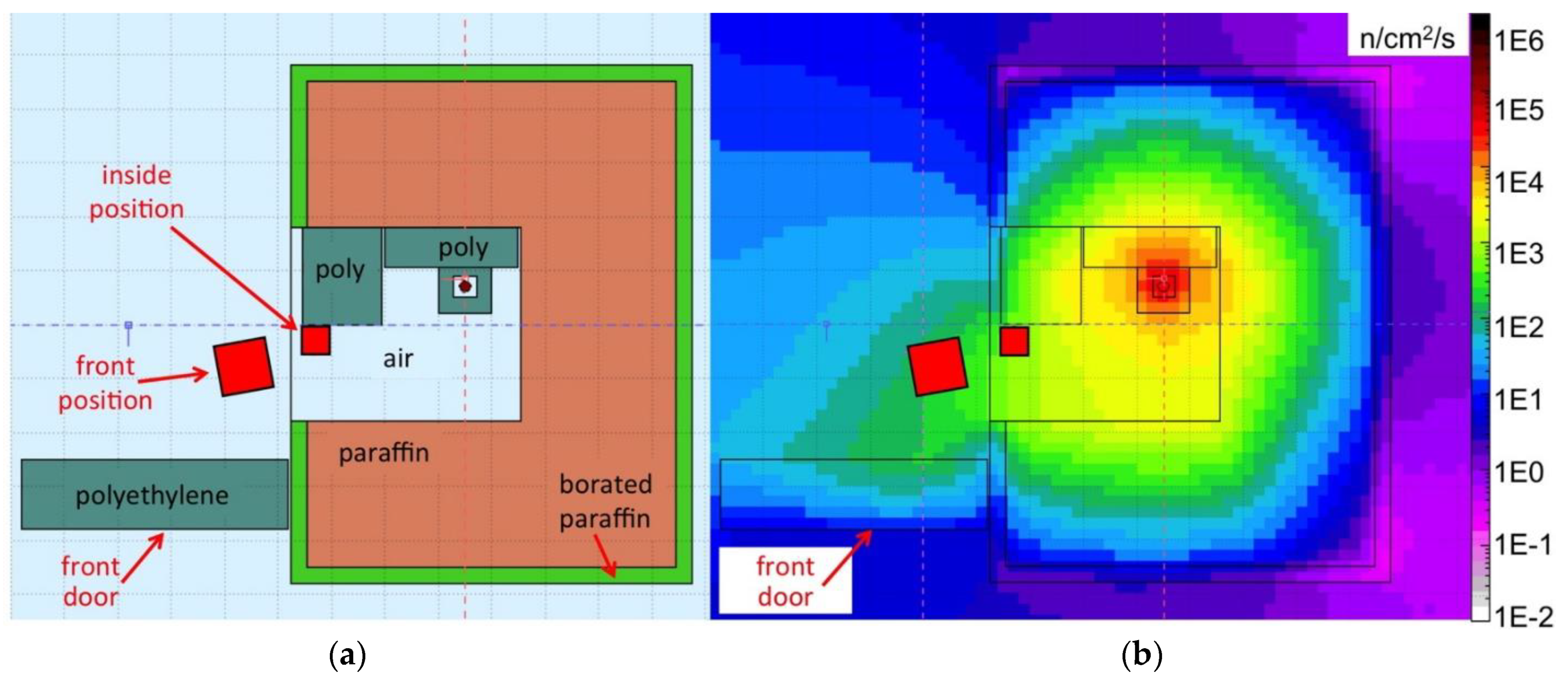



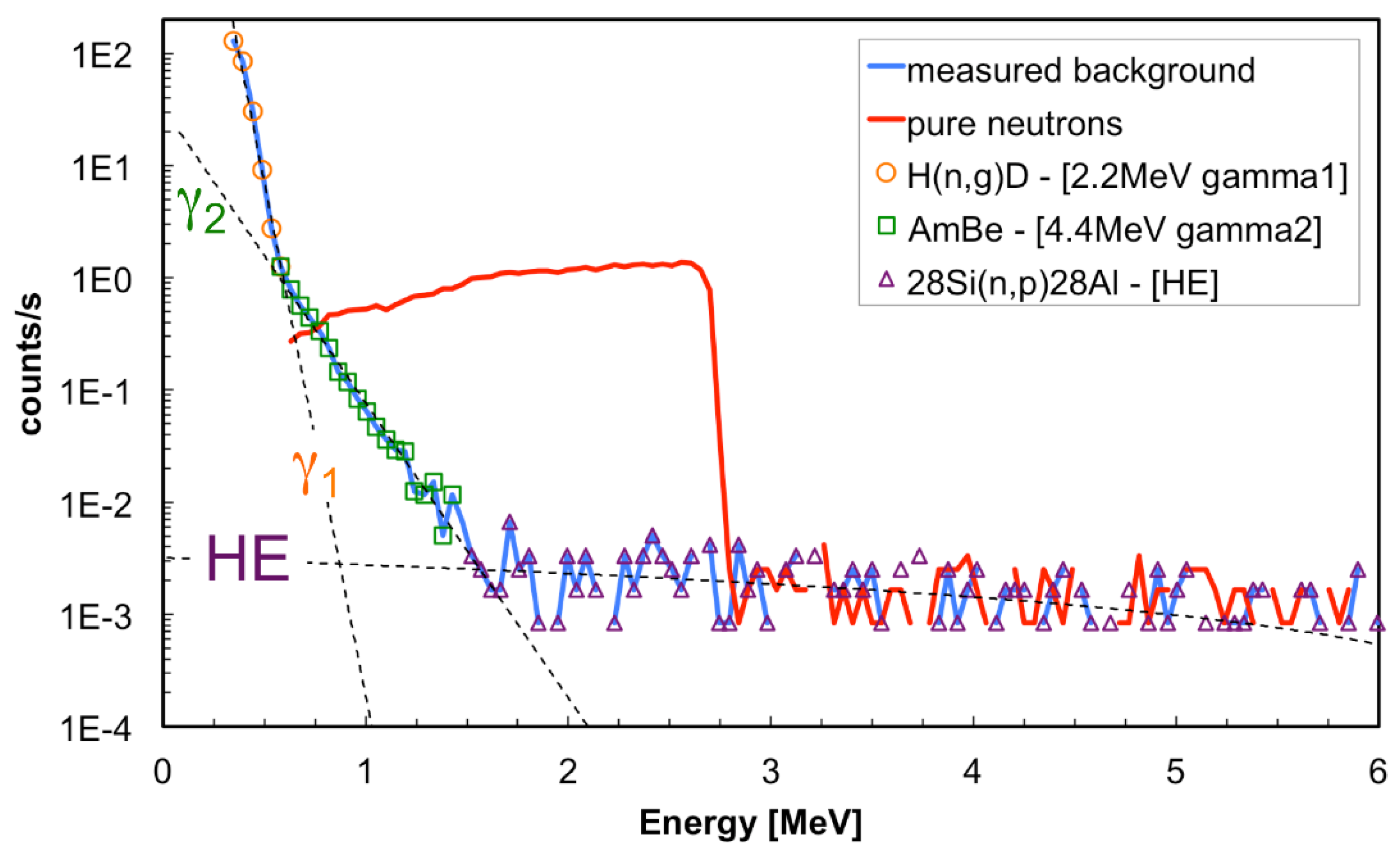
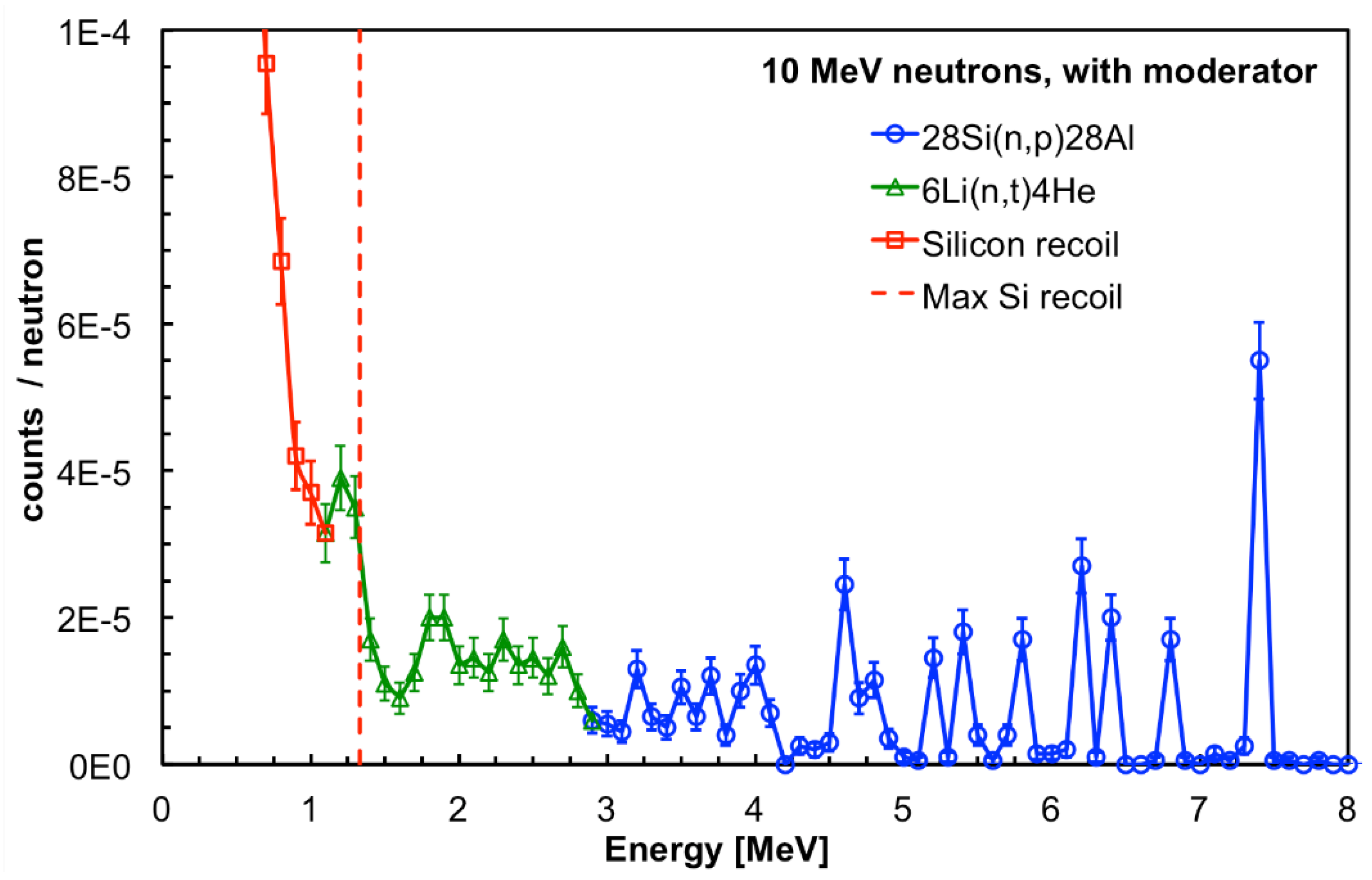
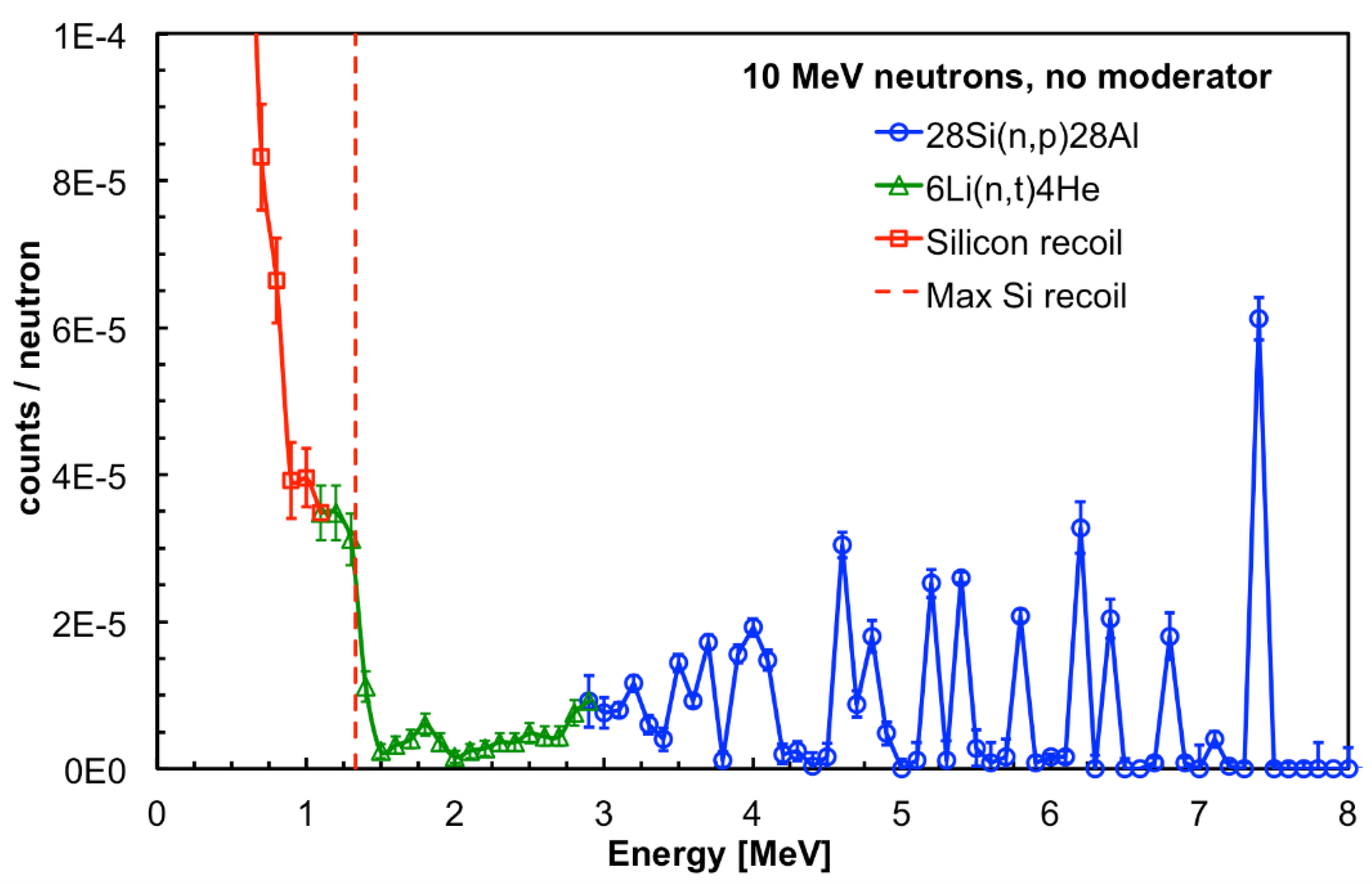


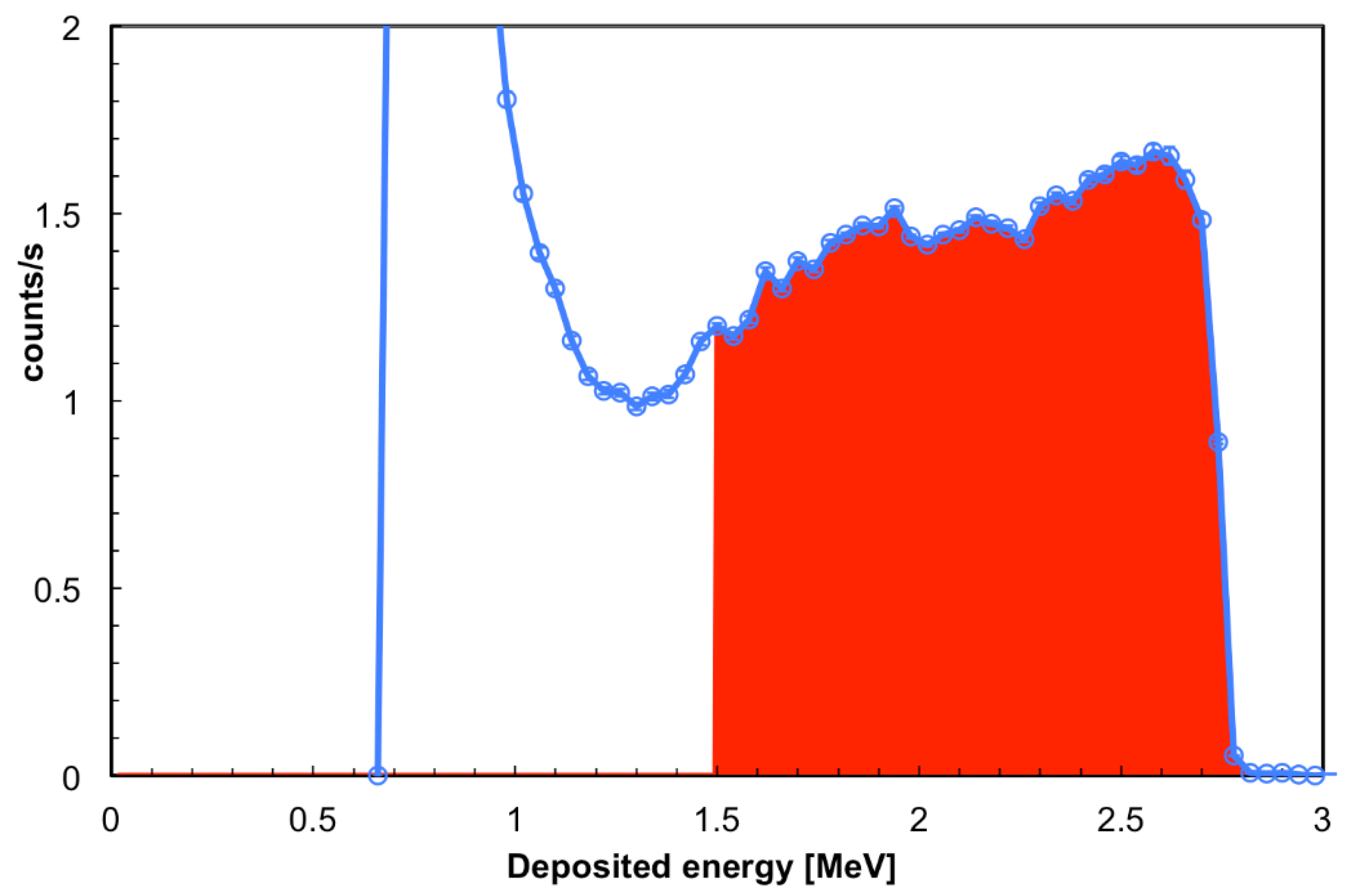
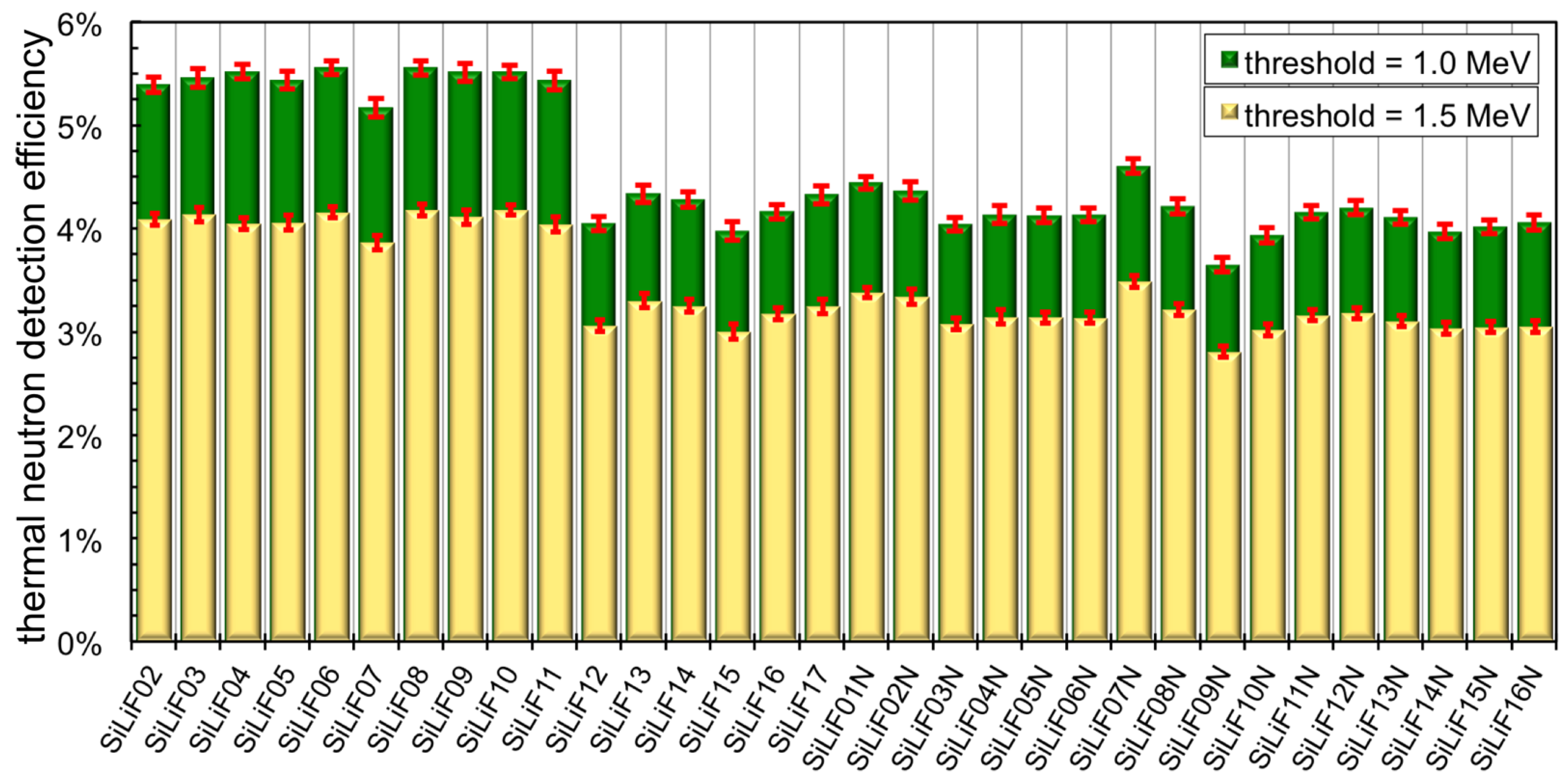


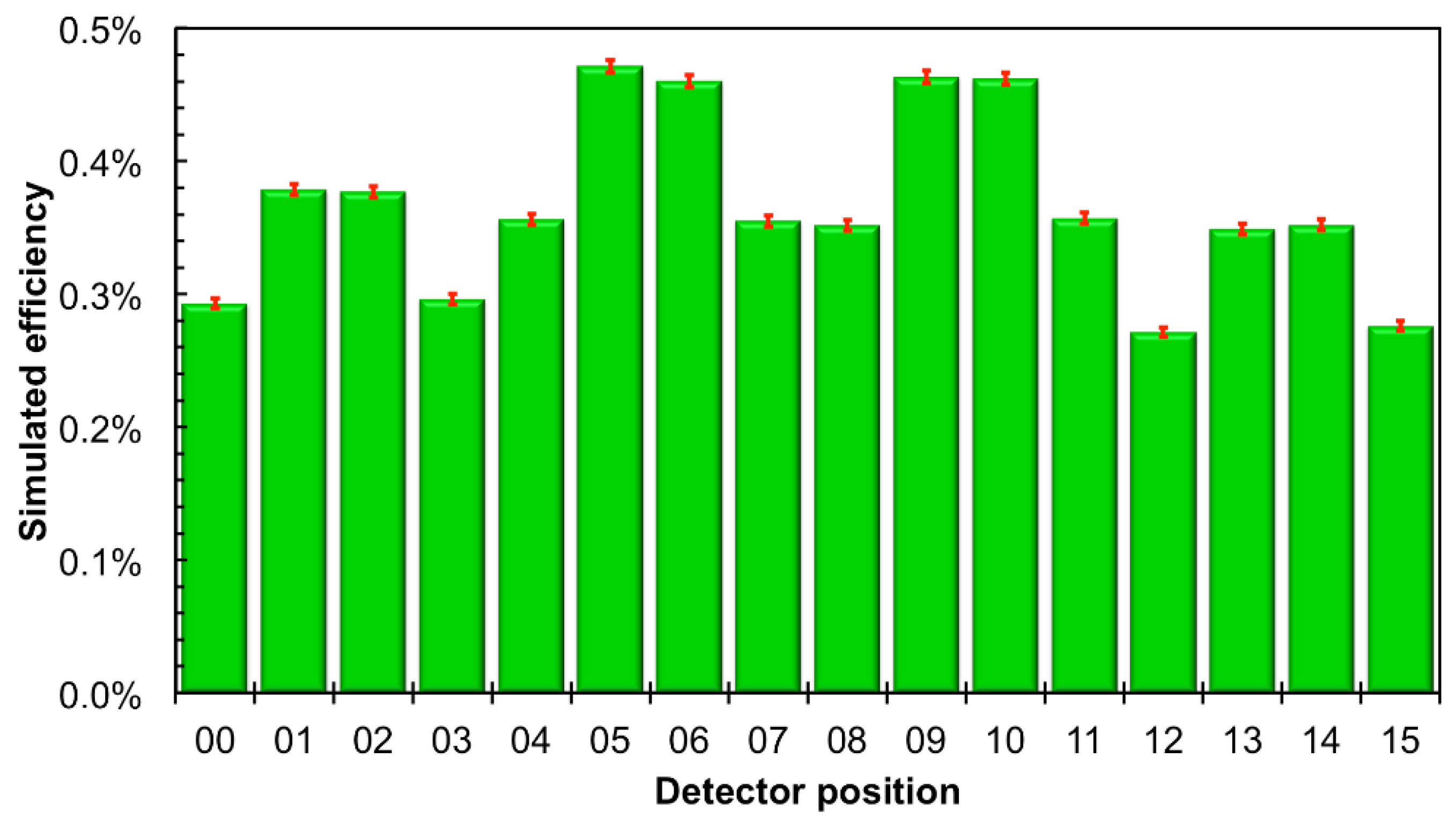

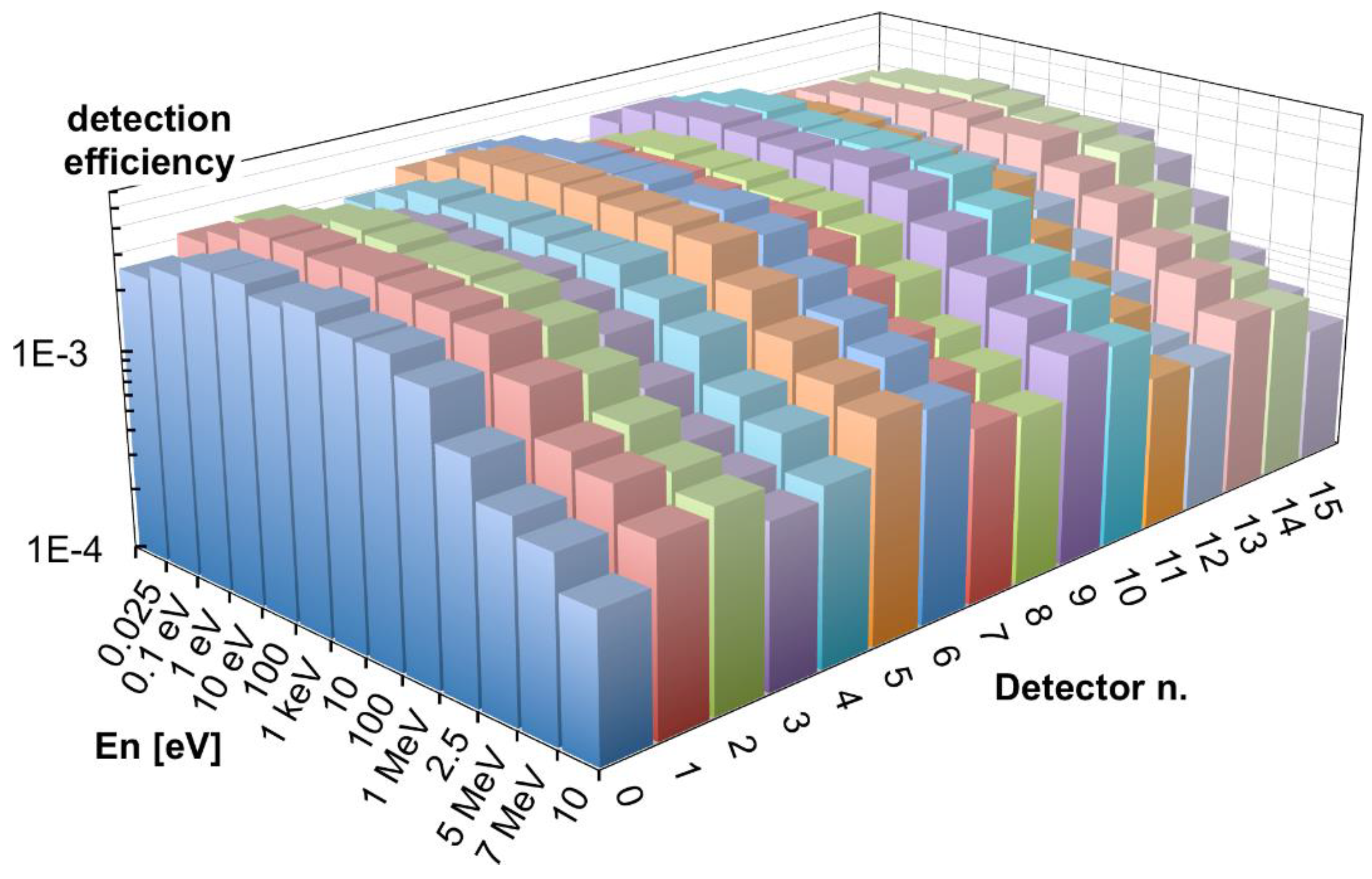



| Measured Counts/s | Simulated Counts/s | |
|---|---|---|
| front | 31.32 ± 0.16 | ≈32 |
| inside | 39.78 ± 0.18 | ≈54 |
Publisher’s Note: MDPI stays neutral with regard to jurisdictional claims in published maps and institutional affiliations. |
© 2021 by the authors. Licensee MDPI, Basel, Switzerland. This article is an open access article distributed under the terms and conditions of the Creative Commons Attribution (CC BY) license (https://creativecommons.org/licenses/by/4.0/).
Share and Cite
Cosentino, L.; Ducasse, Q.; Giuffrida, M.; Lo Meo, S.; Longhitano, F.; Marchetta, C.; Massara, A.; Pappalardo, A.; Passaro, G.; Russo, S.; et al. SiLiF Neutron Counters to Monitor Nuclear Materials in the MICADO Project. Sensors 2021, 21, 2630. https://doi.org/10.3390/s21082630
Cosentino L, Ducasse Q, Giuffrida M, Lo Meo S, Longhitano F, Marchetta C, Massara A, Pappalardo A, Passaro G, Russo S, et al. SiLiF Neutron Counters to Monitor Nuclear Materials in the MICADO Project. Sensors. 2021; 21(8):2630. https://doi.org/10.3390/s21082630
Chicago/Turabian StyleCosentino, Luigi, Quentin Ducasse, Martina Giuffrida, Sergio Lo Meo, Fabio Longhitano, Carmelo Marchetta, Antonio Massara, Alfio Pappalardo, Giuseppe Passaro, Salvatore Russo, and et al. 2021. "SiLiF Neutron Counters to Monitor Nuclear Materials in the MICADO Project" Sensors 21, no. 8: 2630. https://doi.org/10.3390/s21082630









